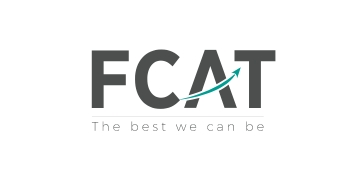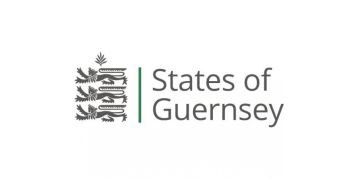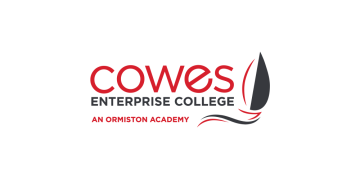Those in charge of multi-academy trusts are not power-mad, says Alison Critchley – but government needs to be clearer about how trust governance should be structured
If you work in an academy, do you know the “members” for your trust? And, most importantly, do you know what they are responsible for?
No?Well, you’re not alone. In a world of academy governance that is sometimes (unkindly) described as shadowy, members are the least visible element of all.
The trustees (sometimes called directors) are responsible for strategic direction, but it is the members who have the power to hire and fire those trustees and are therefore the ultimate decision-makers.
The concept of members comes from company law and, in a business context, it makes sense. Take this example: friends decide to set up a business. They invest the initial capital and are therefore the owners – “members” – of the business. In this situation, the notion of two or three people having ultimate control is unproblematic; after all, they had the idea, put the investment in – it is, in all senses, theirs.
Why the woolly words? It would be much more helpful if the DfE set out its requirements, then gave all trusts a timescale
Returning to the school scenario, a small group – perhaps the head and one or two governors, or a sponsor – may well have proposed the school becoming an academy. Often these individuals were and are the members. But the notion that this small group of founding members “own” a publicly funded school or group of schools in the same way that the founders of a business own a privately established company is problematic.
“But academies are charitable companies,” you may say. Good point!
The charity sector provides interesting alternative models. For example the RSA, as a charitable company, has a trustee board and it has members.
Everyone who subscribes to the charity is also a member and is therefore invited to the AGM where they receive the annual report and can question the trustees.
So, what needs to happen to introduce more accountability to school governance?
First, the Department for Education (DfE)should be much clearer about the number of members and the separation in personnel between members and trustees.
The latest version of the Academies Financial Handbook, which says more about the role of members, is oddly reluctant to say directly what must or must not happen. For example, it states that:
“While members can also be trustees, retaining some distinction … ensures that members … provide oversight and challenge”;
“DfE encourages trusts to have at least five members”; and
“Governance structures in which members are also employees are not considered by DfE to be best practice.”
Why the woolly words? It would be much more helpful if the DfE set out its requirements, then gave all trusts a timescale, perhaps 12-18 months, within which to comply.
Without this, many trusts will continue to work from outdated articles, not due to the power-mad tendencies of those in charge, but because changing legal documents is costly and complicated and most of us working in education would rather be spending our money and energy elsewhere.
Local accountability is missing from the current model
Clearer direction, however, would still leave an unaccountable group of people effectively “owning” our schools – albeit a separate group of people to those making strategic decisions.
More ambitiously, to rebuild local accountability we should rethink who the members are and how they are appointed. For example, members would be drawn from (and elected by) the school’s parental body, and from staff and the local community. Church schools would have one or two members appointed by the church; sponsored academies would have a similar arrangement, and so on.
More radically still, we could explore a charity model, where all of those with a stake in the school became members.
Thus all parents with children attending the academy or academies would be members, invited to the AGM to receive the accounts and have the opportunity to ask questions of the board.
Where things are going well, attendance and participation in the AGMs would be minimal. But where difficulties arise, this model would reintroduce a level of local accountability that is missing from the current academy model.
Alison Critchley is Chief Executive of RSA Academies







There has been long-standing confusion in the Academy sector over the terms members and trustees, and the distinction between them. The latest version of the AFH has attempted to go further to address this, but the confusion is likely to remain. Throw the terms director and governor in as well and there’s more uncertainty.
Essentially trustee = director = governor. The member role is akin to a shareholder in a commercial company. They do ultimately have a lot of power in that they can remove trustees who are underperforming, and this, in essence, is why the ESFA are keen for some independence and segregation between the roles. In practice, however, members who are not also serving as trustees will have little involvement and will not necessarily be aware of all relevant information. It is extremely difficult for multi-academy trusts to attract trustees, nevermind recruiting for members. How attractive is it to ask an individual to be become a member and to tell them they have no real day-to-day involvement? If the individual has skills that the trust could use the person would probably be of more use as a trustee.
There is a huge question mark over the benefits or otherwise of independent members. Academy trusts are exempt charitable companies, and in the not-for-profit sector more generally the structure is usually that all trustees are also members. It does happen sometimes but there is rarely a distinction between the two.
The current ESFA expectations do need to be clarified, and, in my view, it would be preferable to drop the independent member requirement. The ESFA ultimately hold power and can hold any failing trustees to account by terminating a funding agreement and transferring the operation of a trust’s academies to another trust. This is what has already happened in a number of high profile cases, and there are also a number of instances where they have stepped in and stripped academies from poor performing MATs that had grown too large, too quickly.